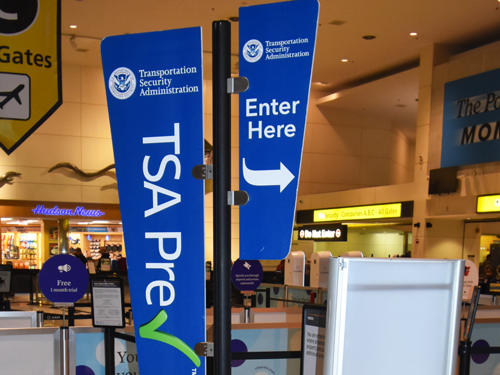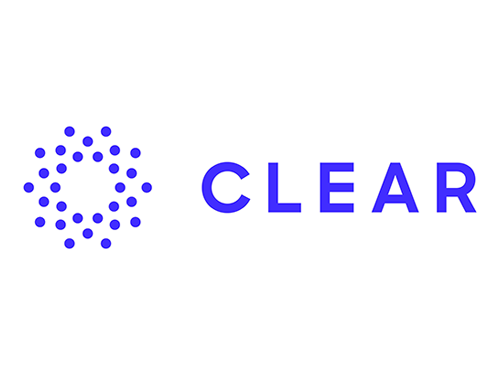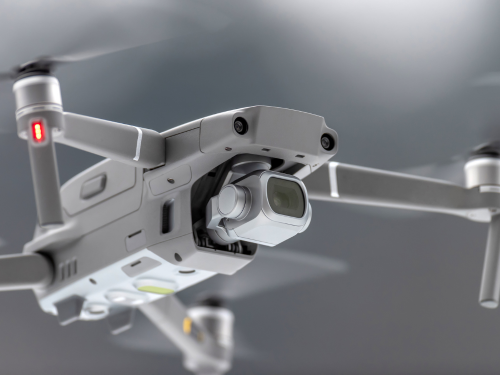- To & From BWI
- At BWI
- Flying With Us
Security
Security Travel Tips
Security Checkpoint Wait Times
BWI Thurgood Marshall Airport provides continuously updated, real-time security wait time information on our homepage (view it here).
Transportation Security Administration (TSA) provides average checkpoint wait times (based on historical data) within its MyTSA mobile app (more info here).
Arrive Early for a Worry-Free Travel Experience at BWI Marshall Airport
The Transportation Security Administration (TSA) currently recommends travelers arrive 2 hours before scheduled Domestic Flights and 3 hours for International Flights. More information and travel tips are available from the TSA at www.TSA.gov.
Curious About An Item Making It Through The Security Checkpoint?
TSA operates the Security Checkpoints here at BWI Marshall Airport. To make it easier to pack ahead of time, check this TSA “What Can I Bring” feature. This is an easy-to-use guide to help determine if your item is allowed in carry-on or checked luggage, or not allowed in either.
TSA Customer Service
Got questions about TSA checkpoint operations or need assistance while going through security? Reach out to the TSA Contact Center by calling 866-289-9673. Representatives are available 8am-11pm ET on weekdays and 9am-8pm ET on weekends/holidays. Automated information is also available anytime in several languages.
The AskTSA team also assists passengers on social media daily from 8am-6pm via Facebook and Twitter. For more TSA contact info, visit this page of the TSA website.
State of the Art Security at BWI Marshall Airport

TSA uses millimeter wave Advanced Imaging Technology (AIT) and walk-through metal detectors to screen passengers. Millimeter wave AIT safely screens passengers without physical contact for metallic and non-metallic threats, including weapons and explosives, which may be concealed under clothing. Generally, passengers undergoing screening will have the opportunity to decline AIT screening in favor of physical screening. However, some passengers will be required to undergo AIT screening if their boarding pass indicates that they have been selected for enhanced screening, in accordance with TSA regulations, prior to their arrival at the security checkpoint. This will occur in a very limited number of circumstances. The vast majority of passengers will not be affected. See the responses to frequently asked questions.
TSA Pre✓®
TSA Pre✓® is a pre-screening program that allows eligible passengers to volunteer information about themselves to expedite their screening experience when traveling at participating airports.
Learn more about TSA Precheck
Global Entry
Global Entry is a U.S. Customs and Border Protection (CBP) program that allows expedited clearance for pre-approved, low-risk travelers upon arrival in the United States.
Learn more about Global Entry
CLEAR
CLEAR is a biometric secure identity platform that uses their Fast Touch TechnologyTM and dedicated member-only lanes to speed travelers through security, consistently getting them to their gate in less than 5 minutes on average.
Learn more about CLEAR
Safety: Advanced Imaging Technology is safe and meets national health and safety standards. This technology uses non-ionizing radio-frequency energy in the millimeter spectrum with no known adverse health effects. It does not use X-ray technology.
Privacy: TSA has strict privacy standards when using Advanced Imaging Technology to protect your privacy. Advanced imaging technology uses automated target recognition software that eliminates passenger-specific images and instead auto-detects potential threats by indicating their location on a generic outline of a person. The generic outline is identical for all passengers.
BWI Marshall Airport works in close partnership with the Transportation Security Administration (TSA) to ensure safe travel for all BWI Marshall Airport passengers.
For additional information see: TSA Website
Be Prepared for Increased Wait Times During Peak Travel Times
Peak Travel Times at BWI Marshall Airport
| Saturday | Sunday | Monday | Tuesday | Wednesday | Thursday | Friday | |
|---|---|---|---|---|---|---|---|
| AM | 6:00 – 8:00 | 6:00 – 8:00 | 5:00 – 8:00 | 6:00 – 8:00 | 6:00 – 8:00 | 5:00 – 8:00 | 5:00 – 8:00 |
| PM | 1:00 – 2:00 | 4:00 – 7:00 | 3:00 – 6:00 | 3:00 – 5:00 | 4:00 – 5:00 | 3:00 – 7:00 | 3:00 – 5:00 |
Know the 1 + 1 Rule for Your Carry-On Bags
You are allowed one (1) carry-on bag and one (1) personal item. Your items must fit below the seat in front of you or in an overhead bin. Your carry-on bag should not exceed 22 x 14 x 9 inches / 23 x 36 x 56 centimeters (including handles and wheels). A personal item must be smaller than your carry-on bag (like a small purse, briefcase or laptop). Diaper bags, child safety seats, and medical or mobility devices do not count as your carry-on or personal item. Please check with your respective airline as they may further restrict allowable size. Musical instruments are also considered a carry-on item and must fit in the overhead bin or under the seat in front of you.
In addition, when traveling with a pet, the kennel or container counts as your carry-on bag and the carry-on pet fee also applies.

3-1-1 for carry-ons: 3.4-ounce (100-milliliter) bottle or less (by volume) – one (1) quart-sized, clear, plastic, zip-top bag – one (1) bag per passenger placed in screening bin; one (1) quart-sized bag per person limits the total liquid volume each traveler can bring. The 3.4-ounce (100-milliliter) container size is a security measure.
Consolidate bottles into one bag and X-ray separately to speed screening. Be prepared. Each time TSA searches a carry-on it slows down the line. Practicing 3-1-1 will ensure a faster and easier checkpoint experience. If in doubt, put your liquids in checked luggage.
Declare larger liquids. Medications, baby formula and food, breast milk, and juice are allowed in reasonable quantities exceeding three ounces and are not required to be in the zip-top bag. Declare these items for inspection at the checkpoint.
Come early and be patient. Heavy travel volumes and the enhanced security process may mean longer lines at security checkpoints. TSA working with our partners. TSA works with airlines and airports to anticipate peak traffic and be ready for the traveling public.
There are many items that are prohibited, some in carry-on and some in carry-on and checked baggage. For details about the new security procedures and time saving tips visit the TSA Website.
Canine Units
TSA passenger screening canine teams may be operationally deployed at the airport, especially near checkpoints. The canines are working animals that are trained to detect traces of explosives concealed on passengers or their belongings. Passengers traveling with pets are asked to use a checkpoint where the working dogs are not assigned at a particular time. Passengers traveling with service animals may continue to use the checkpoint with working dogs.
Drones/Unmanned Aircraft Systems (UAS)
Drone operators must receive an airspace authorization from the Federal Aviation Administration (FAA) to operate within 7 miles of BWI Marshall Airport.
More Info